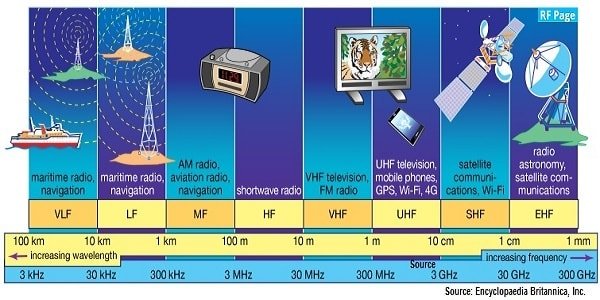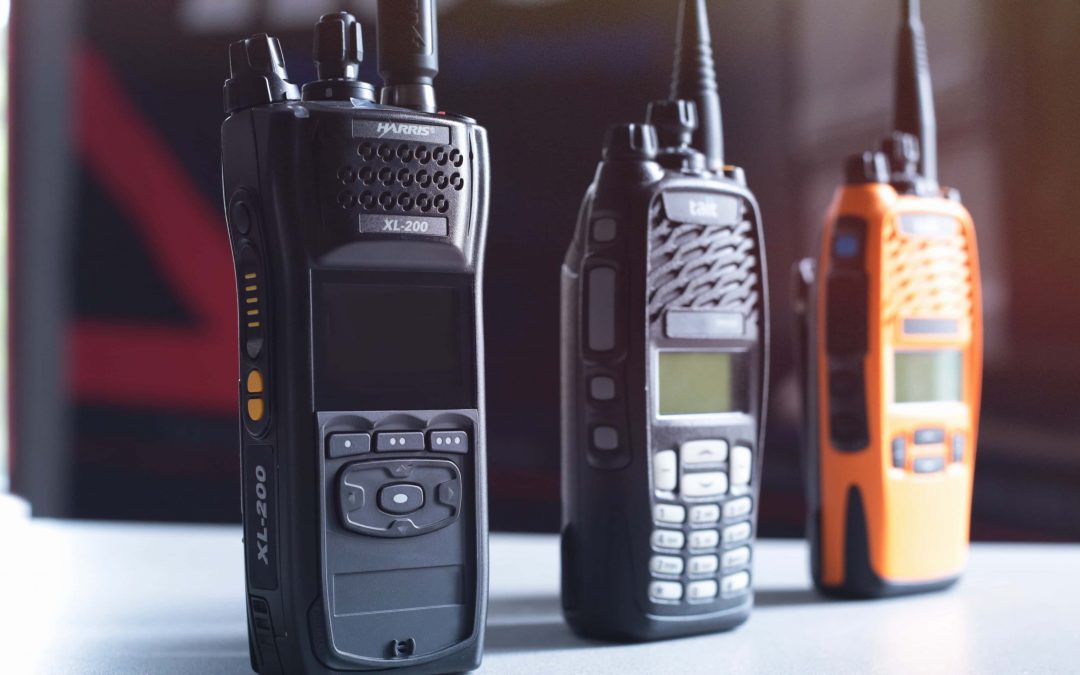
Wireless Radio Frequency Technology
The term wireless RF stands for “wireless Radio Frequency Technology”. If you are just starting with radios, this article can help. It is proposed to give a basic understanding of radio frequency,as well work as a quick reference for those who “know their knowledge” but may be observed to brush up on that one place that they never quite understood. Radio frequency is a measurement signifying the oscillation rate of electromagnetic radio waves or electromagnetic radiation spectrum of frequencies ranging from 300 GHz to 9 kHz. With the use of transmitters and antennas, the radio frequency field can be used for several types of wireless communications.
What is Wireless Radio Frequency?
Wireless Radio frequency is any of the electromagnetic wave frequencies that lie in the range ranging from around 3 kHz-300 GHz, which comprise those frequencies used for radar signals or communications.
Radio frequency usually denotes to electrical rather than mechanical oscillations. But, mechanical RF systems do occur. Although RF is a rate of oscillation, the name RF or “radio frequency” are used as a substitute for radio to define the use of wireless communication, as different to communicate through electric wires.
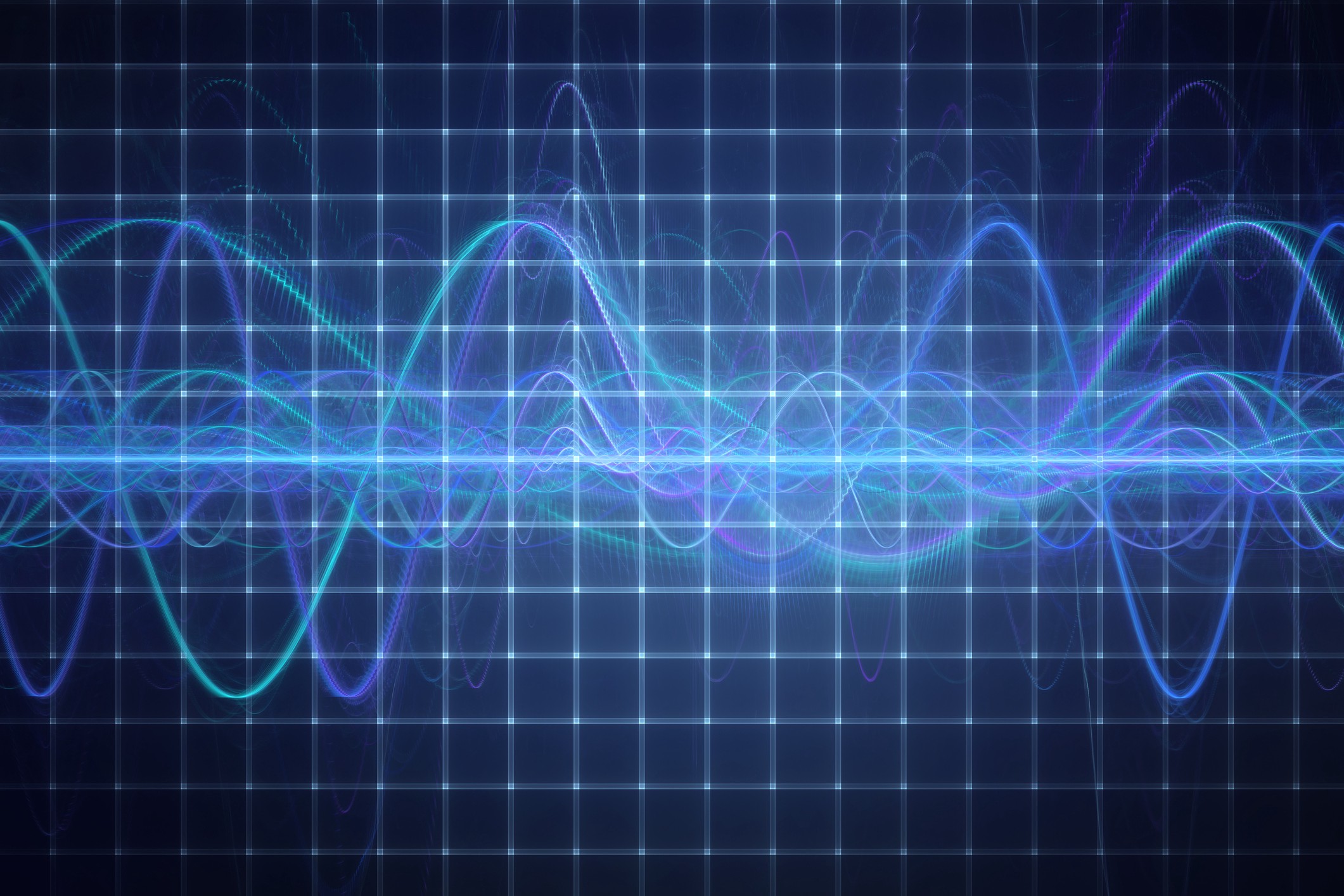
Wireless RF Technology
Several types of wireless devices make use of radio frequency fields like Cordless & Cell phones, radio & TV broadcast stations, satellite communication systems, Bluetooth module and Wi-Fi, and also two-way radios all work in the RF spectrum.
In addition, other appliances, external communications, comprising garage-door openers and microwave ovens, function at radio frequencies. Some wireless devices such as, TV remote controls, computer mice, and some cordless computer keyboards operate at infrared frequencies, which have smaller electromagnetic wavelengths.
How RF Works?
The term RF (Radio frequency) is measured in units called Hz (hertz), which denote the number of cycles/second when a radio signal is transmitted. One Hz (hertz) equals one cycle per second; radio waves range from 1,000 KHz to millions MHz to billions GHz of cycles per second. Microwaves are a kind of radio wave with higher frequencies. Radio frequencies (RF’s) are not visible to the human eye.
In a radio wave, the wavelength ‘s’ is inversely proportional to the frequency ‘f”. If the frequency is measured in megahertz and the wavelength is measured in meters, then
s = 300/f
As the frequency ‘f’ is enhanced beyond that of the RF spectrum, electromagnetic energy takes the type of IR, ultraviolet, visible, X-rays and also gamma rays.
Types of RF Modules
The RF module is applicable for different types, sizes, and shapes of small electronic circuit boards. These modules typically include a PCB (printed circuit board), antenna, transmit or receive circuit, and serial interface for communication with the host processor.The different types of RF modules include the following
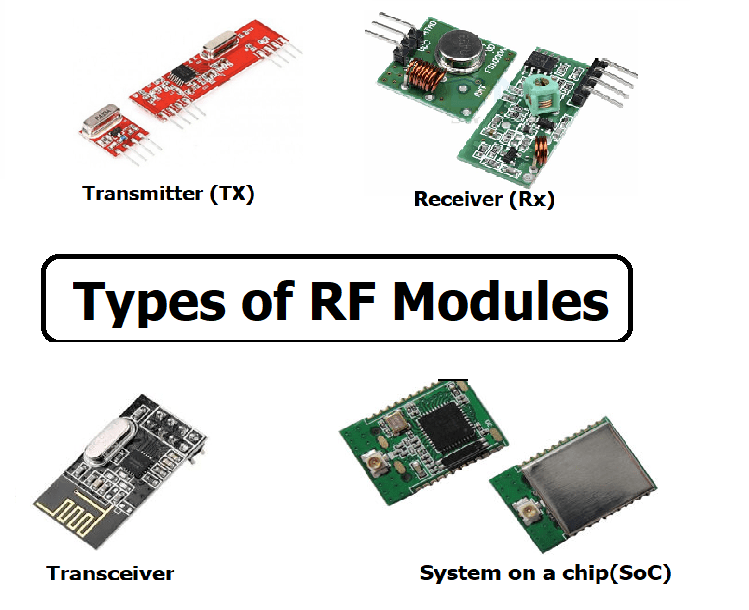
Types of RF Modules
- Transmitter (TX) module
- Receiver (Rx) module
- Transceiver module
- System on a chip(SoC) module
RF Spectrum Bands
The RF spectrum is separated into numerous ranges or bands. With the exemption of the low-frequency segment, every band denotes an increase of frequency similar to an order of magnitude.The following RF spectrum bands table shows the 8-bands in the RF spectrum, showing the ranges of frequency and bandwidth.The SHF (super high frequency) and EHF (extremely high frequency) bands are frequently referred to as the microwave spectrum.
| Designation | Abbreviation | Frequencies | Free Space Wavelengths |
| VLF | Very Low-Frequency | 9KHz-30KHz | 33km-10km |
| LF | Low Frequency | 30KHz-300KHz | 10km-1km |
| HF | High Frequency | 3MHz-30MHz | 100m-10m |
| MF | Medium Frequency | 300MHz-3MHz | 1km-100m |
| VHF | Very High-Frequency | 30MHz-300MHz | 10m-1m |
| UHF | Ultra High Frequency | 300MHz-3GHz | 1m-100mm |
| SHF | Super High Frequency | 3GHz-30GHz | 100mm-10mm |
| EHF | Extremely High-Frequency | 30GHz-300GHz | 10mm-1mm |
The Main Features Affecting RF Module Performance
As with any other RF module, the RF module’s performance will depend on a number of factors. For instance, by increasing the power of a transmitter, a larger communication distance will be reached. But, this will also result in a higher electrical power drain on the transmitter (TX) device, which will root smaller operating life for battery-powered devices. Also, with a higher transmit power will make the system more disposed to interference with an extra RF device.
Correspondingly, increasing the sensitivity of the receiver will also rise the active communication range, but will also possibly cause an error due to interference with additional RF devices.The performance of the whole system may be enhanced by using corresponding antennas at each end of the communication link.
Lastly, the considered remote distance of any specific system is usually measured in an open-air line of sight outline without any interference, but frequently there will be problems like floors, walls, dense construction to grip the radio wave signals, so the current operational distance will in most real examples be less than specified.
Characteristics of RF
The characteristics of RF include the following
- Low power (Typically transmit less than 1mW of power)
- The operating range of RF is good (3 to 30meters)
- Supports data rate up to 1 to 2Mbps
- It Penetrates walls
- Does not require a direct transmission route
Typical applications of RF Technology
The applications of RF technology include the following
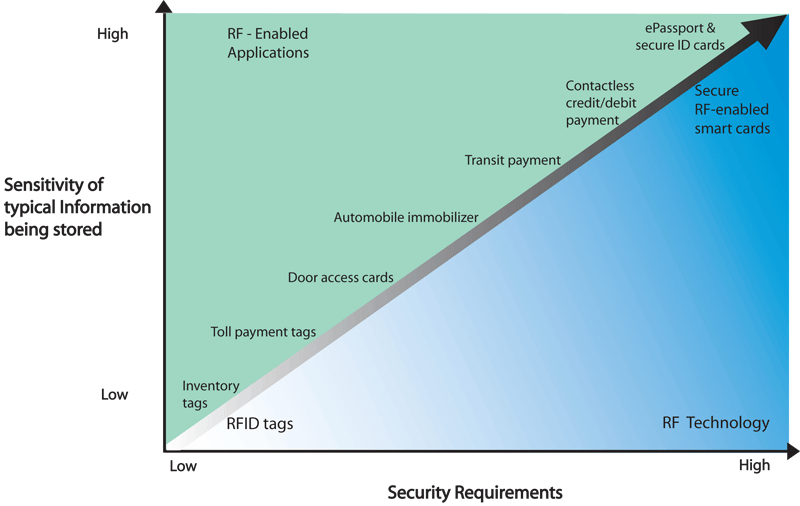
Applications of RF Technology
-
- Vehicle monitoring
- Remote control
- Telemetry
- Wireless meter reading
- Access control systems
- Small range wireless network
- Wireless home security systems
- Industrial data acquisition system
- Wireless data terminals
- Wireless data transmissions
- Biological signal acquisition
- Robot remote control
- Digital audio/ video transmission
- Digital home automation like remote light or remote switch
- Industrial remote control, remote sensing, and telemetry
- Alarm systems and wireless transmission of different types of low rate digital signal
Please refer to this link to know more about RFID MCQs
Please refer to this link to know more about Radio Transmitter MCQs
Thus, this is all about radio frequency wireless technology working and its applications. We believe that you have got a better concept about this concept. Furthermore, any doubts regarding this concept or to implement RF based projects, please give your valuable suggestions by commenting in the comment section below. Here is a question for you, What is the purpose of RF technology?
